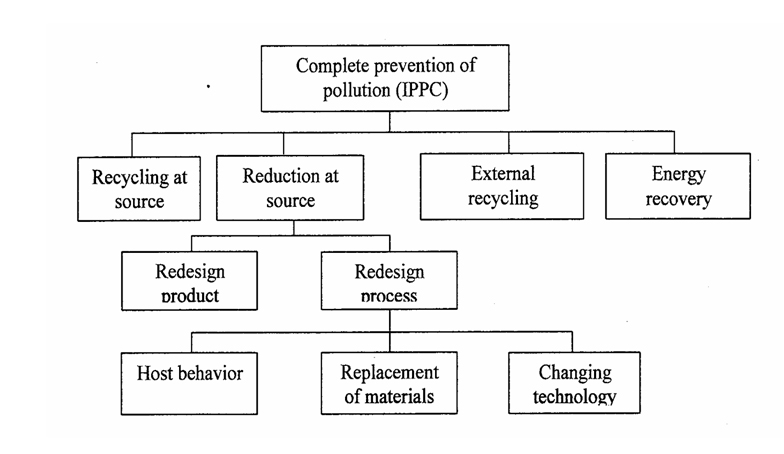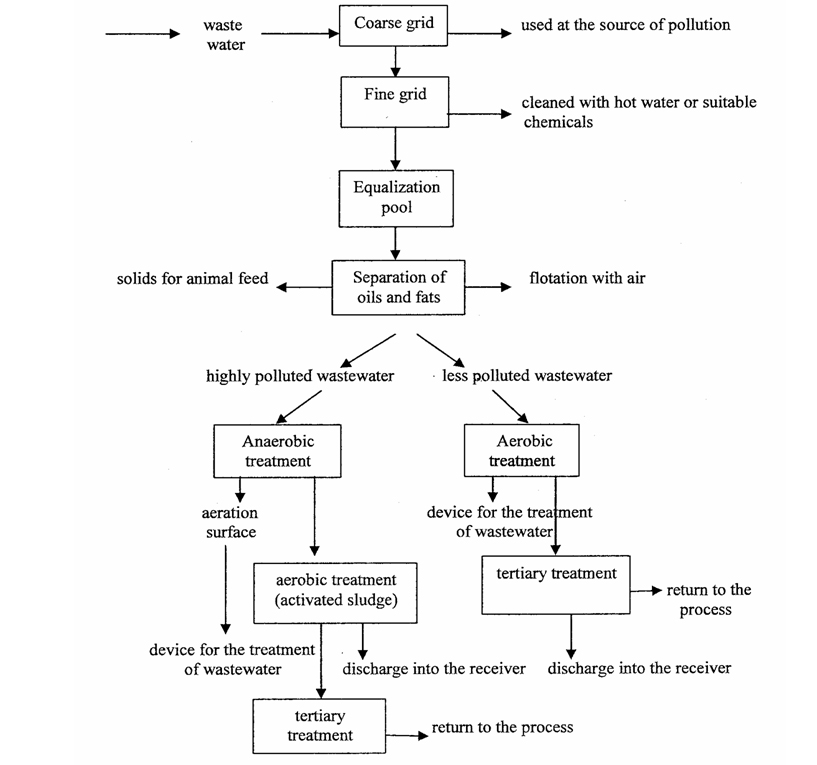APPLICATION OF BEST AVAILABLE TECHNIQUES FOR ENVIRONMENTAL PREVENTION IN MEAT PROCESSING
2University Novi Sad, Institute of Food Technology, 21000 Novi Sad, Bulevar cara Lazara 1, Serbia
ABSTRACT
ABSTRACT
INTRODUCTION
- the emission of pollutants into the air, water or land and,
- disposal of waste and other negative environmental impacts caused by in-dustrial plants, so that their actions were consistent with a high level of en-vironmental protection in general.
For operation of industrial facilities is ne-cessary to obtain a permit that includes a complete study of the environment for each of them, and must be based on best available techniques (BAT Best Available Techniques), in various industrial sectors. This means that business operators need to install the specified date technological solutions, which are today the most mo-dern and guarantee the lowest emission levels in the environment (Nježić end Okanović, 2010; Mastilović et al., 2010; Đukić et al., 2011).
Access to EU member states in imple-menting the IPPC directive is different. Some countries, like Great Britain, tried to consistently apply the provisions of the Directive, while others, such as Denmark or Sweden, it was assumed that the IPPC requires only small changes in the current way of doing business, and that, as long as the good quality of the environment, their current philosophy and practice of environmental permitting can be consi-dered adequate. Greece has decided to implement the IPPC Directive through the existing system of environmental per-mitting. In the current Greek law, permits are required for all types of industries, although requirements vary with the po-tential to produce pollution. The basis for issuing environmental permits, the Law on Environmental Protection.
In Appendix 1 IPPC (2008) is a list of in dustrial activities to which it relates. Limit meat processing capacity is 75 t / day.
The overall strategy of the IPPC Directive can be represented graphically in Figure1. (MOED, 2000).
UNIT OPERATIONS IN MEAT PROCESSING
In meat processing are present in the following technological operations: (IPPC, 2008; Okanović et al., 2009)• wash raw materials,
• thawing,
•fragmentation
(cutting, grinding, chopping ),
• mixing,
• salting,
• designing,
• drying,
• cooking/baking,
• pasteurization / sterilization,
• cooling
• packaging,
• cleaning and disinfection of processing equipment.
IMPACT ON THE ENVIRONMENT OF MEAT PROCESSING
of meat products.
Water consumption
Consumption of water, waste water load and type of solid waste in the production of salami and sausage
Parameter |
Production of salami |
Production of sausage |
|
Water consumption, m3/t |
7,5 |
10 |
|
BPK5 in wastewater, kg/t |
4,7 |
8-10 |
|
N in wastewater, g/l |
300 |
no data |
|
P in wastewater, g/l |
140 |
no data |
Solid waste |
The quantity of waste in cutting and separation of bone |
||
|
Beef |
Pork |
Poultry |
|
|
Bone |
12 |
5-9.5 |
1-2 |
|
Fat |
12 |
3-6 |
6 |
|
Skin |
|
|
1-2 |
Emissions to air
Power consumption
Solid waste
WASTEWATER MEAT PROCESSING
Waste water from brining/salting meat
and NaNO3. In case of wet brining must take into account the amount of baths to be prepared for curing, because at the end of the process liquid phase is discharged into the system for wastewater treatment. If you are fed large amounts of brine are possible disruptions in performance of wa-stewater treatment, given that the insertion does not reduce chlorides in biological treatment, regardless of dilution.
The influence of the enzyme for the treatment of meat on the wastewater
Parameter |
Span |
|
pH |
12-14 |
|
HPK, mg/l |
20.000-100.000 |
|
Phenol index, mg/l |
20-480 |
|
Polyaromatic hydrocarbon, mg/l |
1-5 |
Waste water from cleaning smoke chambers
Waste water from cleaning equipment and work surfaces
WASTE WATER TREATMENT
EXTENT OF POLLUTION PREVENTION IN THE PROCESS OF MEAT PROCE-SSING
1. General preventive measures
- the introduction of environmental mana-gement systems in the meat processing plant,
- replacement of hazardous chemicals in the process less damaging,
- continuous education of employees and well maintenance.
2. Reducing consumption of fresh water
- optimization of water use,
- water recycling.
3. Reducing energy consumption
- optimization of heating and cooling operations,
- installation of the drive frequency convector electric motors,
- installation of the battery to compensate for reactive power.
4. Reducing emissions in the air
- replacement substances that deplete the ozone layer,
- optimization of ignition and shutdown of boilers,
- recovery from boiler flue gases.
5. Reducing emissions to water
- reducing the use of chemical cleaning materials,
- recycling water where possible.
6. Protection of groundwater
- watch out for accidental expiration of chemicals from the tank.
- Solid waste collected in special containers to prevent falling to the ground and coming to a device for wastewater treatment with water for cleaning work premises.
- Liquid resulting squeeze meat from con-tainer handling before washing transferred to a separate dust container, so as not to due to a device for wastewater treatment.
- In the meat during processing (cutting, skinning, removal of bone), bone and ine-dible waste is collected separately for fur-ther processing or disposal of animal waste in the landfill.
- During the preparing of meat for the pro-duction of sausages, salami... behind the walls of vessels adhered mass that dries quickly and hard to clean. In order to shorten the time of cleaning, reducing wa-ter use and detergents, dry cleaning is re-
Processing of meat |
||
|
Parameter |
Unit |
Reference value |
|
Consumption of fresh water |
6,0-10,0 |
|
|
Quantity of wastewater |
m3/t |
10,0-25,0 |
|
Burden of waste water |
kgHPK/t |
0,8-2,5 |
|
Electricity consumption |
1000-1300 |
|
|
Heat consumption |
kWh/t |
450-1000 |
In the process of processing of meat is most thermal energy is used in techno-logical operations pasteurization and ste-rilization. By optimizing the operation of boilers and condensate return can reduce heating energy consumption per unit of product. Reducing energy el. energy per unit of production can be done in several ways: by installing compensating battery which eliminates payment of reactive power, installation of electric motors with frequency convectors rotation. They can regulate the speed of electric motors, according to the actual requirements of pump drives and can be easily automated and remotely managed (Okanović et al., 2011).
SPECIFIC INDICATORS OF THE MEAT PROCESSING
In the Document on Best Available Techni-ques in the Food Drink and Milk Industry issued by the EU (IPPC, 2008) lists the specific indicators for the given process. These values can be taken as reference (Table 4)
CONCLUSION
This not only requires technological chan-ge, but to a greater extent and change behavior. Rising prices of energy and na-tural resources, the more expensive the actual production. It is the concept of BAT was shown in practice the EU, one of the responses that can reduce costs, achieve greater manufacturing performance, and reduce environmental pollution. It should be noted that the introduction of the con-cept of BAT other than finance, and time requirements, which requires the timely preparation of industry on the require-ments placed upon them.

 JOURNAL TOOLS
JOURNAL TOOLS




 INSTITUTE
INSTITUTE